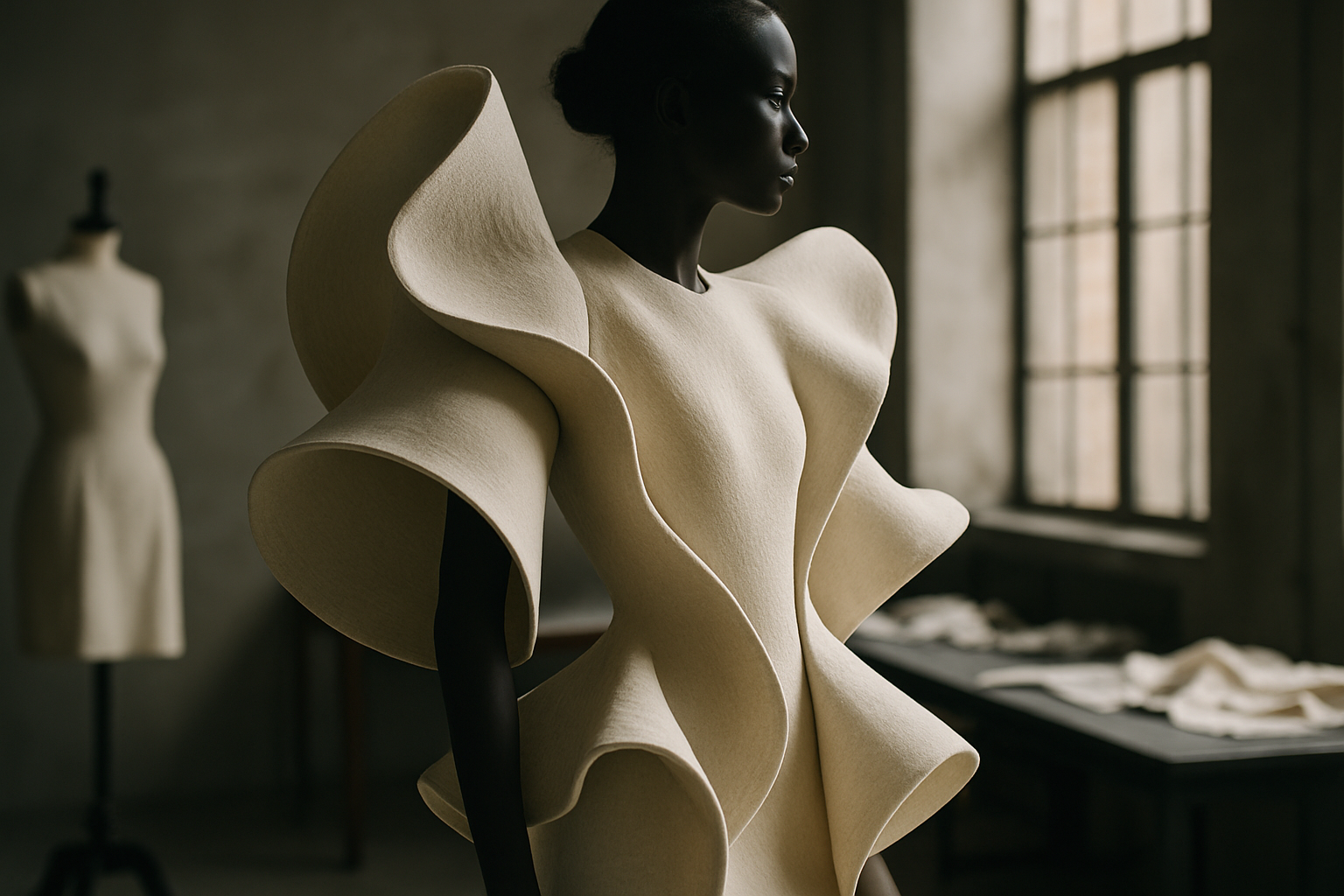Title: Trendspotting: The Rise of Sculptural Silhouettes
In the ever-evolving world of fashion, a new artistic movement is taking shape—literally. Sculptural silhouettes are emerging as the next big thing, transforming everyday garments into wearable art pieces. This trend goes beyond mere clothing, blurring the lines between fashion and sculpture, and challenging our perceptions of form and function in apparel. As designers push the boundaries of traditional tailoring, we're witnessing a renaissance in shape and structure that's set to redefine the fashion landscape.

Historical Echoes in Modern Design
While sculptural silhouettes feel cutting-edge, they’re not without historical precedent. The trend echoes elements from various eras, including the structured bustles of the Victorian age, the avant-garde designs of 1960s space-age fashion, and the bold shoulders of the 1980s. However, today’s interpretation is distinctly modern, incorporating advanced fabrics and construction methods that allow for greater experimentation with shape and movement. This fusion of past and present creates a unique aesthetic that feels both familiar and futuristic.
Tech Meets Textile
The rise of sculptural silhouettes is intrinsically linked to advancements in textile technology. New materials with enhanced structural properties allow designers to create and maintain complex shapes that were previously impossible. Smart fabrics that can hold their form while remaining lightweight and comfortable are at the forefront of this trend. Additionally, 3D printing and digital pattern-making tools are enabling designers to push the boundaries of what’s possible in garment construction, resulting in pieces that are as much engineering marvels as they are fashion statements.
From Runway to Retail
While sculptural silhouettes have been gaining traction on high-fashion runways for several seasons, they’re now making their way into mainstream retail. Designers and brands are finding ways to incorporate architectural elements into wearable, everyday pieces. This transition is marked by the introduction of subtler sculptural details in ready-to-wear collections, such as structured peplums, artfully pleated skirts, and tops with architecturally inspired necklines. These elements allow consumers to embrace the trend without fully committing to avant-garde looks.
Styling the Sculpture
Incorporating sculptural pieces into one’s wardrobe requires a shift in styling approach. The key is to let the architectural element take center stage. When wearing a garment with a bold, sculptural shape, it’s best to keep the rest of the outfit simple and streamlined. Accessories should be minimal and complementary, not competing with the garment’s form. The beauty of sculptural pieces lies in their ability to create striking silhouettes, so styling should aim to enhance, not overshadow, this effect.
Navigating the Sculptural Trend
- Experiment with proportion: Mix voluminous pieces with fitted items to create balance
- Focus on one sculptural element per outfit to avoid overwhelming the look
- Choose fabrics with body and structure to maintain the intended shape
- Consider your body type when selecting sculptural pieces—some shapes may be more flattering than others
- Invest in quality pieces with interesting construction details for a timeless take on the trend
As fashion continues to evolve, sculptural silhouettes represent a bold step into a new era of design. This trend challenges us to rethink the relationship between clothing and the body, offering fresh perspectives on personal style and self-expression. By embracing these architectural forms, we’re not just wearing clothes—we’re donning wearable art that transforms us into living sculptures. As the line between fashion and art continues to blur, one thing is clear: the future of style is taking shape, and it’s more dimensional than ever before.





